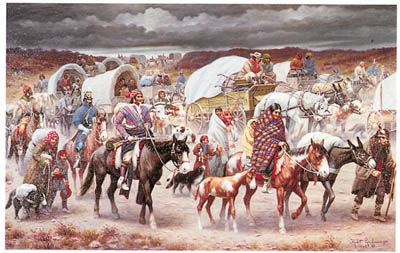How did organisations helped in this migration?
How did organisations helped in this migration?
The Trail of Tears National Historic Trail, administered by the National Park Service in partnership with federal, state, and local agencies; nonprofit organisations; and private landowners, commemorates the Cherokee experience. It identifies the routes that 17 Cherokee detachments followed westward.
Today the trail encompasses approximately 2,200 miles of land and water routes and traverses portions of nine states. The Arkansas Historic Preservation Program (AHPP) is working with the National Park Service and the Trail of Tears Association, as well as with state historic preservation offices in other states, to identify and preserve properties associated with the Cherokee removal of the 1830s.
GIS has helped AHPP find and record numerous sections of the Trail of Tears. Some sections of the route, such as the one pictured here, are well preserved.
To help identify sections where the route is unclear, AHPP has established a GIS. Information from historic maps, photographic imagery, and elevation data has helped researchers uncover some lost sections of the Trail of Tears. Other data sources include digital orthophoto=(aerial photographs) quadrangles (DOQs), georeferenced historic maps, and historic databases.
Find more about this organisation helping in this migration:
http://www.esri.com/news/arcuser/1003/trailoftears.html
|


Comments
Post a Comment